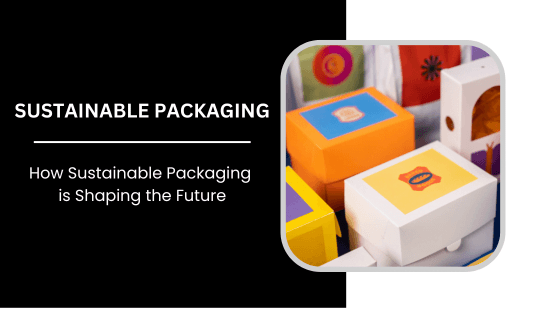
How Sustainable Packaging is Shaping the Future
In the ever-evolving landscape of consumer goods, sustainable packaging has emerged as a pivotal factor shaping the future of the industry. For Flykez CO, a creative brand company in Norway, adopting eco-friendly packaging solutions is essential not only for environmental stewardship but also for staying competitive and appealing to a growing base of environmentally conscious consumers.
The Rise of Eco-Friendly Packaging
1. The Environmental Imperative
As global awareness of environmental issues increases, consumers and businesses alike are prioritizing sustainability. Eco-friendly packaging reduces waste, lowers carbon footprints, and conserves natural resources. Materials such as biodegradable plastics, recycled paper, and compostable films are becoming standard, helping to minimize the impact on landfills and oceans.
2. Regulatory Pressures
Governments worldwide are implementing stricter regulations to curb plastic waste and promote recycling. These regulations are driving innovation in packaging design, compelling companies to adopt more sustainable practices. For Flykez CO, staying ahead of these regulations by integrating sustainable materials is crucial for compliance and brand reputation.
Benefits of Sustainable Packaging
3. Brand Differentiation
Eco-friendly packaging is a powerful differentiator in a crowded market. Brands that prioritize sustainability can appeal to a broad audience, particularly millennials and Gen Z, who are more likely to support companies with strong environmental commitments. Highlighting your use of sustainable packaging can enhance brand perception and loyalty.
4. Cost Efficiency
While the initial investment in sustainable materials might be higher, the long-term cost benefits are significant. Sustainable packaging often leads to reduced waste management costs and can be more efficient in the supply chain due to lighter materials that lower shipping expenses.
Innovations in Sustainable Packaging
5. Minimalist Packaging
Minimalist packaging aligns perfectly with sustainable principles by reducing material usage. This approach emphasizes simplicity and functionality, eliminating unnecessary components. It not only lowers environmental impact but also appeals to consumers who appreciate clean, modern designs.
6. Biodegradable and Compostable Materials
Innovations in materials science have led to the development of biodegradable and compostable packaging options. These materials break down naturally, reducing waste and contributing to a circular economy. For instance, bioplastics made from renewable resources like corn starch and cellulose offer a viable alternative to traditional plastics.
7. Recyclable and Reusable Packaging
Recyclable packaging ensures that materials can be reprocessed and used again, minimizing waste. Encouraging consumers to recycle through clear labeling and providing information on how to do so can enhance recycling rates. Additionally, reusable packaging, such as returnable containers, reduces the need for single-use materials.
The Role of Print and Packaging Design
8. Educating Consumers
Packaging design plays a crucial role in educating consumers about sustainability. Clear messaging on eco-friendly attributes and recycling instructions can drive consumer behavior towards more sustainable practices. Using print design effectively to communicate these messages is vital. Also Read About Packaging Innovations for the E-commerce Boom
9. Tactile and Visual Appeal
Sustainable packaging doesn’t have to compromise on aesthetics. Innovative print design can incorporate tactile elements and high-quality visuals that appeal to consumers. Techniques like embossing, debossing, and the use of natural textures can enhance the sensory experience while maintaining an eco-friendly approach.
Future Trends in Sustainable Packaging
10. Smart Packaging
The integration of technology into packaging, such as QR codes and NFC tags, can provide consumers with information on sustainability initiatives, product origins, and recycling instructions. Smart packaging enhances transparency and engages consumers in the sustainability journey.
11. Circular Economy Models
Adopting circular economy models, where packaging materials are continuously reused and recycled, is becoming more prevalent. This approach reduces waste and maximizes resource efficiency. Brands that implement circular practices can significantly lower their environmental impact.
Implementing Sustainable Packaging at Flykez CO
12. Strategic Planning
To successfully implement sustainable packaging, Flykez CO should conduct a thorough analysis of current packaging materials and processes. Identifying areas for improvement and setting clear sustainability goals will guide the transition to eco-friendly solutions.
13. Collaboration and Innovation
Collaborating with material scientists, packaging engineers, and sustainability experts can drive innovation. Exploring new materials and technologies will ensure Flykez CO stays at the forefront of sustainable packaging trends.
14. Consumer Engagement
Engaging consumers in the sustainability journey is crucial. Transparency about the benefits and features of eco-friendly packaging can build trust and encourage more environmentally responsible behavior.
Conclusion
Sustainable packaging is not just a trend but a fundamental shift towards a more responsible and sustainable future. For Flykez CO, embracing eco-friendly packaging solutions offers numerous benefits, from enhanced brand reputation to cost efficiencies and regulatory compliance. By prioritizing sustainability in packaging design, Flykez CO can lead the way in creating a greener, more sustainable world.
For more information on how Flykez CO can help with your rebranding needs, visit www.flykez.com.
